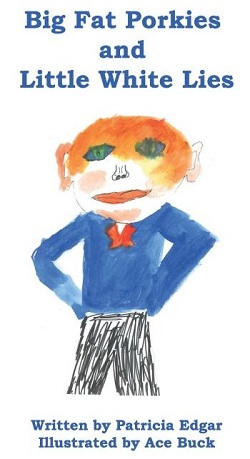The Australian Communications and Media Authority's Children's Program Standards and Australian Content Standards
(Patricia Edgar, 2007)
Section 122 of the Broadcasting Services Act 1992 requires the Australian Communications and Media Authority (ACMA) to develop Standards for children on commercial free-to-air television. The underlying policy rationale for prescribing standards for children's television reflects the cultural objectives for the role of broadcasting in Australia as identified in the Act including to promote Australia's identity, character and cultural diversity. In legislating for the development of standards for children's television the explanatory memorandum acknowledges that children's television programming is a matter of community concern that may potentially be overlooked by broadcasters as a result of their obligation to their shareholders to make decisions which maximise profits.
The objectives of the children's television standards reflect cultural objectives and are identified as:
- to provide for children to be specifically catered for in programming, including Australian programming and
- to provide for the protection of children from possible harmful effects of television.
In prescribing standards the Act explicitly identifies several areas that are intended to be addressed in relation to children. These are: the times at which children's programming should be broadcast; how programs televised during children's viewing time should be classified; and the requirement for Australian programming for children.
The standards currently require commercial television licencees to broadcast a minimum number of hours of both children's (C) and preschool (P) classified programs referred to as C and P quotas. The C quota also includes a sub quota for Australian children's drama programs. In order for these programs to qualify towards the quotas they must be classified by ACMA before being broadcast. In addition to the requirements about programming, the Standards contain provisions relating to the broadcasting of advertisements, promotions, station identifications, community service announcements, news flashes and other announcements during C and P programming.
ACMA's role is to work with the industry to manage an effective regulatory environment that promotes self regulation, efficiency and competition within the industry; is supportive of technological advancement; and enables the industry to meet the needs of the community.
The provisions of the standards must be adhered to as part of the licence condition for commercial television broadcasters. There are penalties if a licensee does not adhere.
Additionally, licensees must adhere to the requirements of the Australian Content Standard which provides a definition for Australian C drama and requires a licensee to broadcast a minimum number of hours per year of first release Australian C drama.
While the Standards place a positive obligation on the industry in relation to children's programming there is also a commercial television industry code of Practice - independent of ACMA's powers of investigation - which caters for television viewing more broadly. The Code covers issues such as program classification, including the portrayal of violence, sex and nudity, language (swearing), drugs and suicide. The Code of Practice also requires that television advertisements comply with the Australian Association of National Advertisers code of ethics and code for advertising to children. The AANA codes are self-regulatory tools, to ensure that advertisers meet their obligations to the consumer and to promote a sense of social responsibility that ensures appropriate content when advertising to children.
These Standards are being reviewed to ensure they remain effective as the future digital environment will be different from the current analog environment, with multi-channelling and technological advancement likely to significantly change the media landscape.
The current requirements are as follows:
To provide children with access to programming that has been developed specifically for them the Standards place an obligation on commercial free-to-air television licensees to broadcast at least 390 hours of children's programs per year, including 130 hours of P and 260 hours of C programs.
Half of the C programs - 130 hours - must be first release Australian content and all P programs must be Australian. The Standard also requires, in accordance with the Australian Content Standard, minimum broadcast hours of Australian drama within the overall quota of C programming required.
Licensees must broadcast at least 96 hours of first release Australian C drama over a three-year period with a minimum of 25 hours in each year. At least eight hours per year of repeat Australian drama is also required.
Underpinning the quota requirements for children's television is the objective of children having access to programs made specifically for them including Australian programs, and the recognition that there is little commercial incentive to broadcast children's programs. This recognition reflects the high cost of children's programs compared with advertiser appeal. It is understood that children's programs, especially quality children's drama, are no less expensive to produce than similar programs for adults. However the child audience is smaller with limited spending power and therefore less attractive to advertisers.











